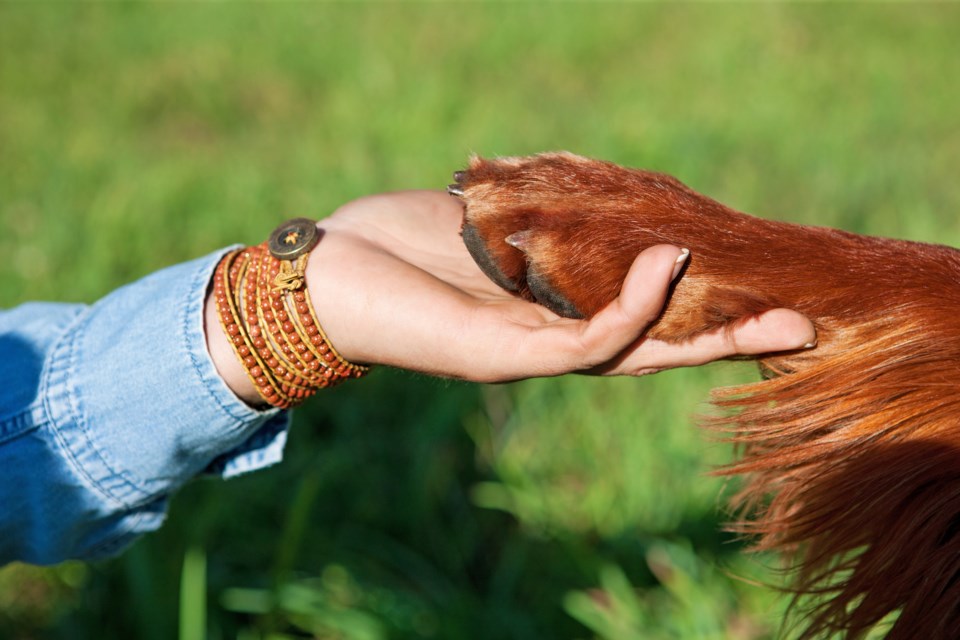Tap, a paw landed on my knee startling me awake from my Sunday afternoon nap. Kai raced back and forth between me and the back porch, making sure that I woke up and followed him.
As soon as he saw me following he dropped to the floor lying down next to the washing machine. The wash had finished and it was time to switch it to the dryer. Kai had made sure that I knew.
Kai is a service dog and I am his owner, handler and partner. I’m deaf. Some might call me hearing impaired as I do have some hearing, especially with my hearing aids. However, I rely on speechreading to communicate and there are some sounds that I can’t hear at all.
Unfortunately, they tend to be the ones used in fire alarms; so, Kai is essential to keep me safe and independent.
Kai is a standard poodle. He’s black and white which is known as a parti. His priority is to alert me to sounds. Much as he woke me up to tell me about the washing machine, he’ll also alert me to the microwave, the oven, the kettle, and the alarm on my cell phone. He also lets me know which direction sound is coming from generally which is particularly important as I don’t hear sounds behind me at all.
You may have seen Kai and I about town. He goes with me almost everywhere.
Occasionally, I leave him at home as he needs to feel comfortable not being with me for those instances where he can’t be. One of those is coming up soon. I will be having surgery and while I have the right to have Kai with me in the hospital, I won’t be able to take care of him. Therefore, my friend, who’s trained to handle Kai in an emergency, will take care of him and bring him in to visit me.
Thankfully, it’s just overnight as Kai does a lot more for me than sound alerts.
I have a variety of invisible disabilities and he helps me with those too. As examples, when I drop things, he picks them up; he alerts me if I need to take my asthma medication or have forgotten to take it when I should have done, such as before exercise. He is trained to help me with many different issues and he loves his job.
To be a service dog Kai has been trained in advanced levels of obedience, and additionally trained in the tasks that I need him to do to mitigate my disabilities.
He needs to be calm and comfortable in all settings including the frantic pace of my being treated during an anaphylaxis episode and the ambulance ride to the hospital. At other times, he lies calmly at my feet for hours at a time while I’m in meetings. His alerts are often very subtle. You wouldn’t see them unless you were looking for them. He is also taught to escalate them. An initial nudge of his nose against my leg will escalate to his standing up with both paws on my shoulders, licking my face, if I don’t pay attention the first time.
Kai and I have found the Sault to be a very welcoming place to work as a service dog team. Most people seem to know service dog etiquette and ignore Kai as they should. It’s important that you do ignore a working service dog, as not doing so can bring great harm to their handler.
Right now, Kai’s off duty and curled up on the couch next to me dozing happily. Down time is important for both of us. Soon enough he’ll be vested up, in his working gear and we’ll head out.
Right now, though, we’ll continue that Sunday afternoon snooze.
